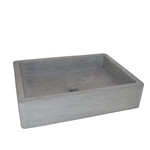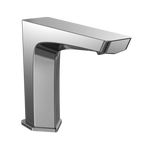We know that many homeowners are sheltering in place. Everyone is worried about the Coronavirus pandemic. According to the Center for Disease Control, the virus spreads principally through personal conduct. That’s why most states have issued stay at home orders and are pleading with their citizens to practice social distancing, to wash your hands frequently and not to touch your face.
Here are a few suggestions to help keep your home virus free:
- Clean AND disinfect frequently touched surfaces daily. This includes tables, doorknobs, light switches, countertops, handles, desks, phones, keyboards, toilets, faucets, and sinks.
- How to clean and disinfect:
Hard (Non-porous) Surfaces
- Wear disposable gloves when cleaning and disinfecting surfaces. Gloves should be discarded after each cleaning. If reusable gloves are used, those gloves should be dedicated for cleaning and disinfection of surfaces for COVID-19 and should not be used for other purposes. Consult the manufacturer’s instructions for cleaning and disinfection products used. Clean hands immediately after gloves are removed.
- If surfaces are dirty, they should be cleaned using a detergent or soap and water prior to disinfection.
- For disinfection, most common EPA-registered household disinfectants should be effective.
- A list of products that are EPA-approved for use against the virus that causes COVID-19 is available here. Follow manufacturer’s instructions for all cleaning and disinfection products for (concentration, application method and contact time, etc.).
- Additionally, diluted household bleach solutions (at least 1000ppm sodium hypochlorite) can be used if appropriate for the surface. Follow manufacturer’s instructions for application, ensuring a contact time of at least 1 minute, and allowing proper ventilation during and after application. Check to ensure the product is not past its expiration date. Never mix household bleach with ammonia or any other cleanser. Unexpired household bleach will be effective against coronaviruses when properly diluted.
- Prepare a bleach solution by mixing:
- 5 tablespoons (1/3rd cup) bleach per gallon of water or
- 4 teaspoons bleach per quart of water
Soft (Porous) Surfaces
- For soft (porous) surfaces such as carpeted floor, rugs, and drapes, remove visible contamination if present and clean with appropriate cleaners indicated for use on these surfaces. After cleaning:
- Launder items as appropriate in accordance with the manufacturer’s instructions. If possible, launder items using the warmest appropriate water setting for the items and dry items completely.
- Otherwise, use products that are EPA-approved for use against the virus that causes COVID-19 and that are suitable for porous surfaces.
- Launder items as appropriate in accordance with the manufacturer’s instructions. If possible, launder items using the warmest appropriate water setting for the items and dry items completely.
Electronics
- For electronics such as cell phones, tablets, touch screens, remote controls, and keyboards, remove visible contamination if present.
- Follow the manufacturer’s instructions for all cleaning and disinfection products.
- Consider use of wipeable covers for electronics.
- If no manufacturer guidance is available, consider the use of alcohol-based wipes or sprays containing at least 70% alcohol to disinfect touch screens. Dry surfaces thoroughly to avoid pooling of liquids.
Linens and Clothing
- Wear disposable gloves when handling dirty laundry from an ill person and then discard after each use. If using reusable gloves, those gloves should be dedicated for cleaning and disinfection of surfaces for COVID-19 and should not be used for other household purposes. Clean hands immediately after gloves are removed.
- If no gloves are used when handling dirty laundry, be sure to wash hands afterwards.
- If possible, do not shake dirty laundry. This will minimize the possibility of dispersing virus through the air.
- Launder items as appropriate in accordance with the manufacturer’s instructions. If possible, launder items using the warmest appropriate water setting for the items and dry items completely. Dirty laundry from an ill person can be washed with other people’s items.
- Clean and disinfect clothes hampers according to guidance above for surfaces. If possible, consider placing a bag liner that is either disposable (can be thrown away) or can be laundered.
Hand Hygiene and Other Preventive Measures
- Household members should clean hands often, including immediately after removing gloves and after contact with an ill person, by washing hands with soap and water for 20 seconds. If soap and water are not available and hands are not visibly dirty, an alcohol-based hand sanitizer that contains at least 60% alcohol may be used. However, if hands are visibly dirty, always wash hands with soap and water.
- Household members should follow normal preventive actions while at work and home including recommended hand hygiene and avoiding touching eyes, nose, or mouth with unwashed hands.
- Additional key times to clean hands include:
- After blowing one’s nose, coughing, or sneezing
- After using the restroom
- Before eating or preparing food
- After contact with animals or pets
- Before and after providing routine care for another person who needs assistance (e.g. a child) Equip every sink in your home with a bottle of liquid anti-bacterial soap and either paper towels or fresh hand towels and a hamper or wastebasket. Near every faucet, provide sanitizing wipes and disinfect your faucets, toilet flush levers, countertops and door handles every day.
- Additional key times to clean hands include:
- Recognize the difference between cleaning and disinfecting. Cleaning removes dirt, grime and germs, helping to reduce or eliminate the number of germs on a surface. Disinfecting actually kills germs which helps to reduce the possibility of becoming infected after a surface is cleaned. Clean first, then disinfect. You can effectively clean most surfaces with soap and water. To disinfect properly, use an Environmental Protection Agency (EPA) approved disinfectant or create your own by mixing 5 tablespoons of bleach with a gallon of water or use a rubbing alcohol that contains at least 70% alcohol. Be careful using bleach solutions on laminate and granite surfaces. Bleach can cause discoloration in laminate and can damage the seal on granite and other stone surfaces.
- Focus on cleaning and disinfecting the surfaces that receive the most contact during the day. Door levers/knobs, light switches, kitchen appliance handles (refrigerator, oven, dishwasher), faucets, toilet tank levers, toilet seats, toilets, kitchen and bathroom cabinet hardware, bathroom fixtures, remote controls, tables, desks, video game controllers and sinks.
- Try to place your personal items such as your phone, key ring, purse, etc. in the same place every day. Clean and disinfect these items daily, but exercise caution with touchscreens.
- To get buy in from your kids, place the verse of a song on the mirror in the bathroom or kitchen that they can sing for 20 seconds or have a song on your phone that you can play while they wash their hands. Give your children the opportunity to buy different scented, sizes and colored soaps so they have some “skin in the game.”
- If you use linen clothes hampers, wash those with your clothes. Use the hottest water possible that won’t damage your things. Don’t shake your dirty laundry in the air because doing so could spread the virus through the air. After placing items in your washing machine, wash your hands.
What’s most important is to be safe and take extra precautions until our entire community can return to normal daily life. If you would like additional guidance for cleaning the fixtures in your kitchen and bathrooms, please give us a call at (888-682-5956) or email us at sales@plumbing-deals.com.



